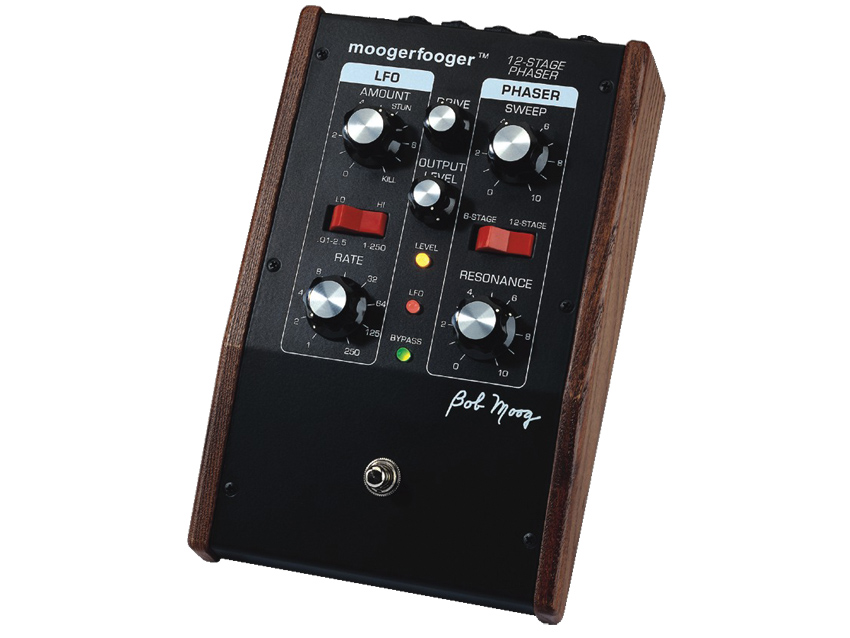The effects that changed music
From 1920 to 2011, the audio processing milestones
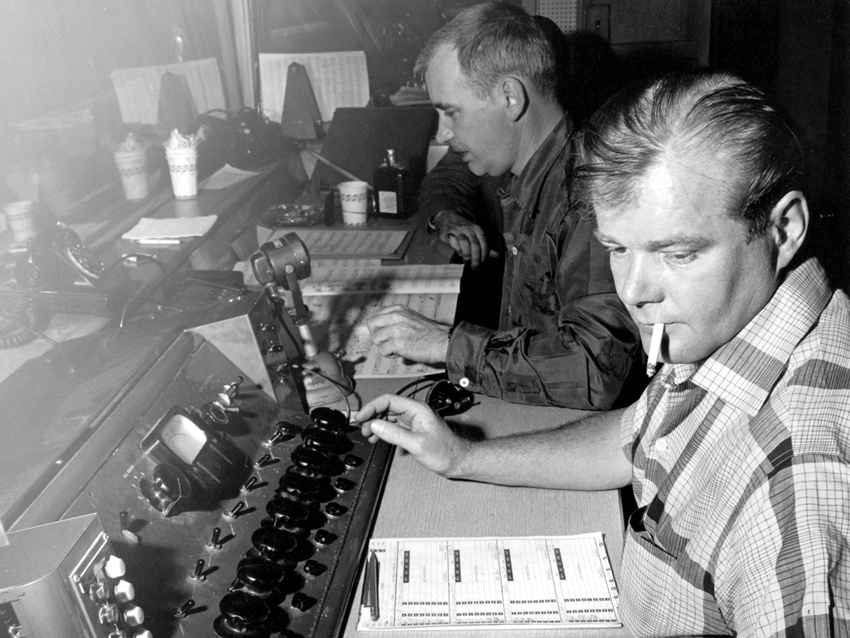
1920
Looking at our effects racks today, it’s easy to forget that producers haven’t always had access to such a wide range of sound sculpting tools. Indeed, some of the essential processors that we now take for granted were actually ‘invented’ by accident.
Join us, then, as we explore the weird and wonderful history of effects, charting the key developments from the past ninety years or so.
We start in 1920, the birth year of legendary US audio engineer Bill Putnam - widely regarded as the godfather of the modern recording. His unbelievable list of firsts includes tape repeat, multi-voice recording, multiband EQ and the use of reverb as an effect. Oh, and he was also the man behind the UREI company, which was responsible for several classic bits of kit, including the 1176LN compressor.
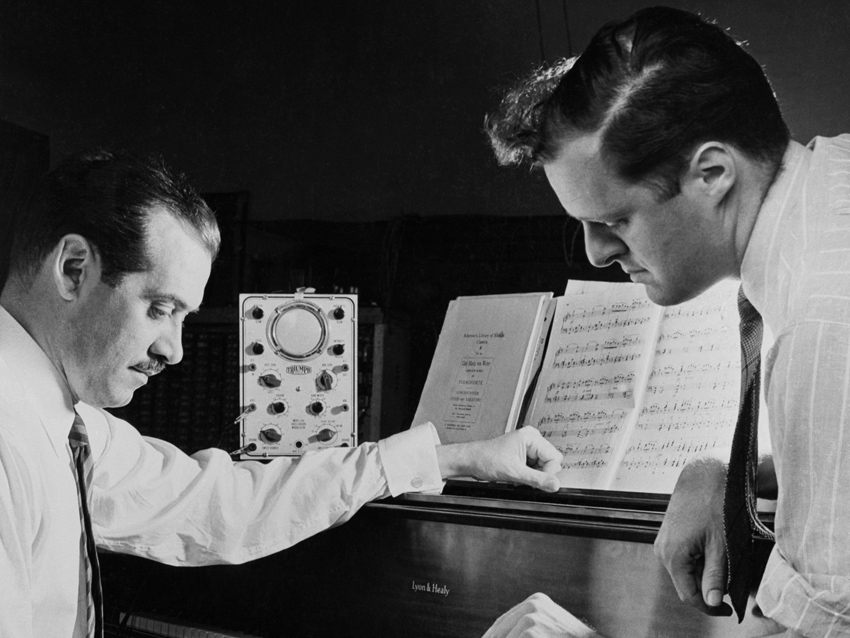
1935
Laurens Hammond introduces the Hammond organ into American homes, but after hearing the organ played in church halls, owners are left disappointed by its dry sound. Using a design developed by Bell Laboratories, Hammond adds an electromechanical ‘spring’ reverb to the organ’s tone cabinet. It’s four feet tall and filled with oil!
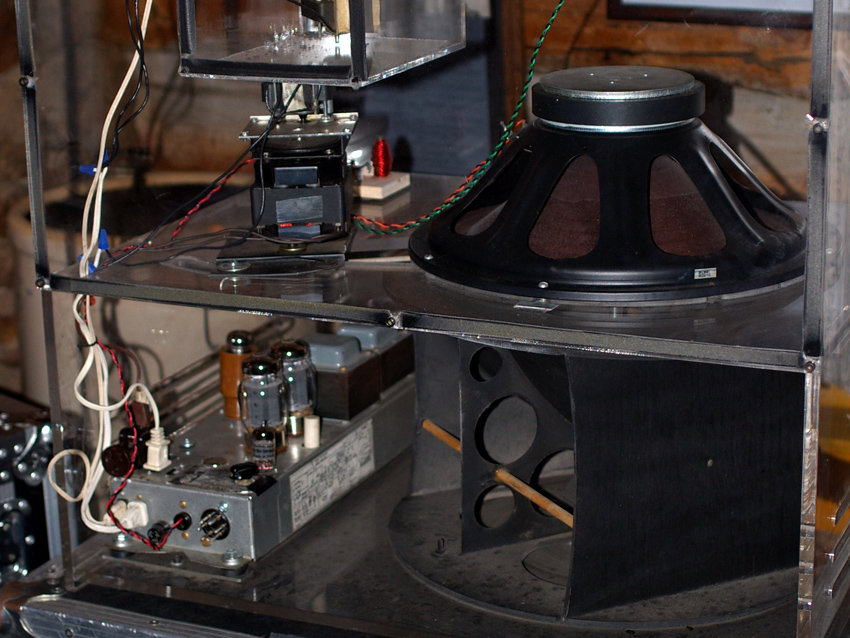
1937
Notice how a police car’s siren changes tone as it speeds past you? That’s the Doppler effect, utilised by Don Leslie in his ingenious, rotating Leslie Cabinet. Its warm tremolo, vibrato and chorus effects are much loved by Hammond organ owners, but Jimi Hendrix will later use it for guitar, and John Lennon will sing through a Leslie on the pioneering Tomorrow Never Knows.

1942
Bell Labs engineer Homer W. Dudley had been conducting voice encryption experiments since 1928, and his vocoder (voice encoder) formed the basis of the US government’s attempts to secure its communications during World War II. Eight massive SIGSALY - a made-up word - encryption machines are built by the Allies – it probably wasn’t available as a plug-in.
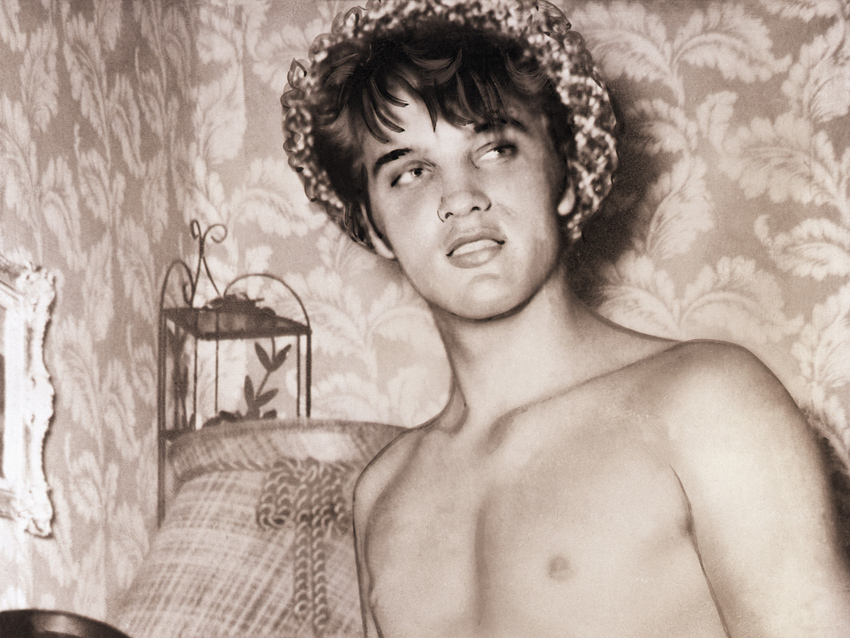
1954
Other engineers may have pioneered the use of tape delay – where a signal is sent to the record head of a tape machine, and milliseconds later it’s sent back to the desk from the playback head - but Sun Records’ Sam Phillips took slapback to the masses with the help of That’s All Right from some spotty oik called Elvis, last spotted working in some supermarket in Vicksburg, Mississippi.
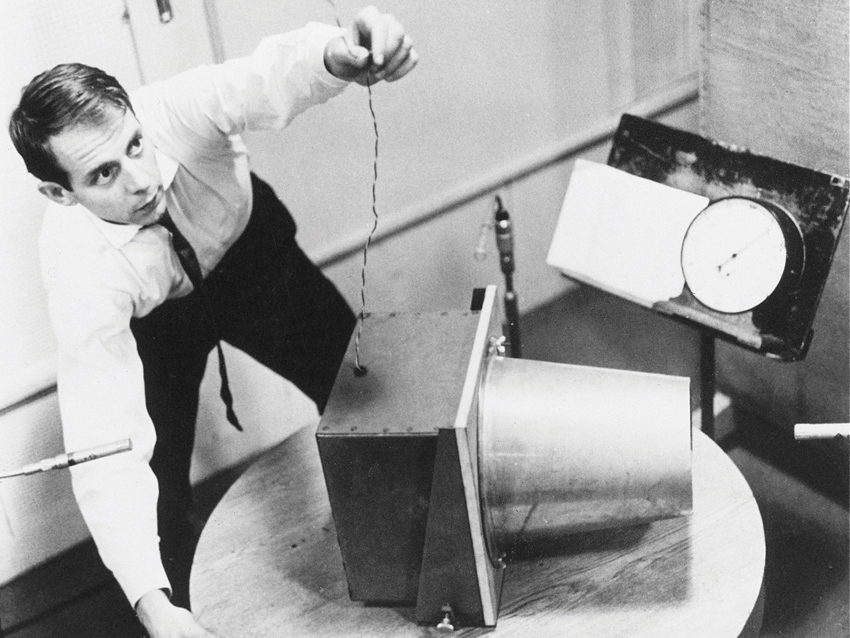
1955
Stockhausen starts work on Gesang der Jünglinge, now hailed as the first masterpiece of electronic music, and the first work to project sounds around the audience using a multi-channel recording and playback system. Around the same time, he starts experimenting with an extreme effect called ring modulation, which produces a single output from two signals - one of them a simple waveform, like a sine wave - via a ring-style diode circuit, and… please pay attention at the back.

1962
Sounding like Hank Marvin from the Shadows on ketamine, Dick Dale unleashes his furiously twanged, turned-up-to-ten, spring reverb-soaked version of the traditional Greek tune Misirlou - later used, of course, in Tarantino’s Pulp Fiction. Surf guitar rules the (air)waves, driven by Dale’s trusty Fender Dual Showman amp. Now the amp isn’t just there to make the guitar louder - it can add effects, too!
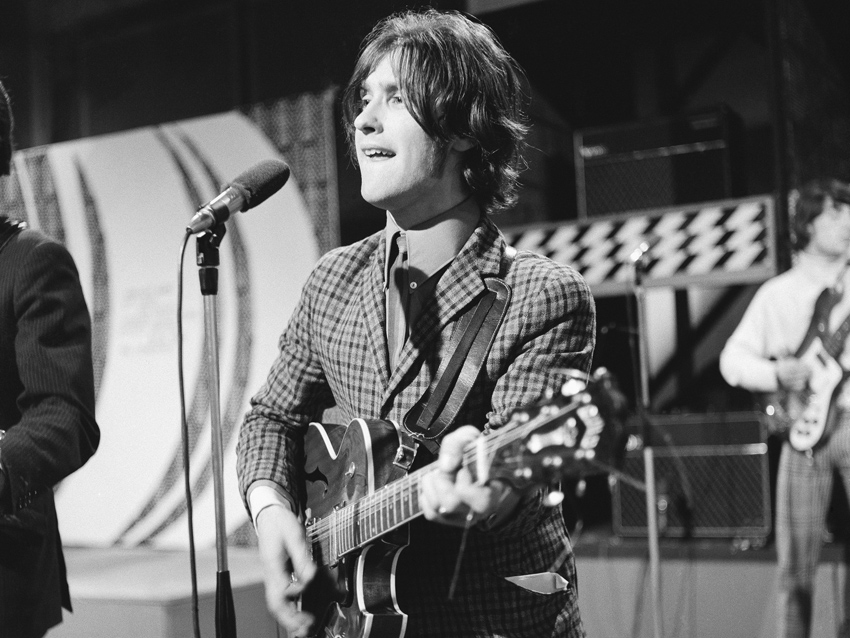
1964
Taking the guitar to new and nastier heights, the Kinks’ chart-topper You Really Got Me features heaps of teenage attitude, power chords and distortion - a sound created by 17-year-old Dave Davies when he slices and punctures his speaker cone. Is this the song that invents heavy metal? Answers on a studded leather postcard, please.
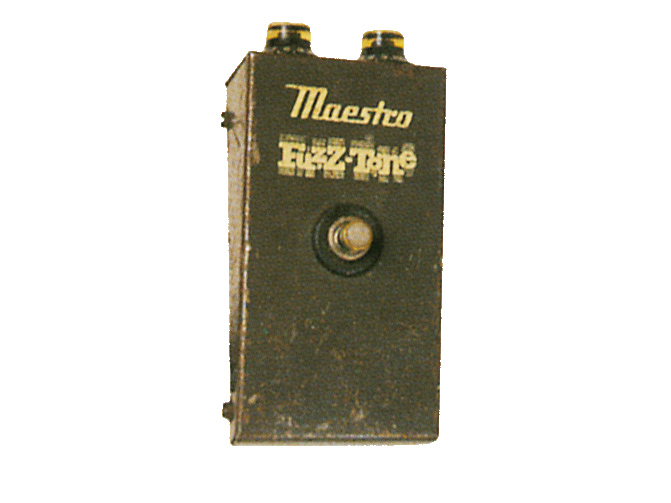
1965
Ever heard of Glen Snoddy? After a faulty desk sends the guitars a bit ‘fuzzy’ on Marty Robbins’ 1960 hit Don’t Worry, recording engineer Snoddy invents a device to reliably recreate the sound. Say hello to the Maestro Fuzz-Tone, the first transistorised guitar effects pedal, used by Keith Richards on the 1965 Number One Satisfaction.

1966
Effects, electronics and studio trickery are now beginning to shape the sound of popular music. As ever, pushing the envelope a little bit further are The Beatles, with help from whitecoated Abbey Road twiddlers like Ken Townsend. Tape-based flanging (a name made up by Townsend and Lennon, according to Beatles historians) and automatic double-tracked vocals are used extensively on the band’s Revolver album.
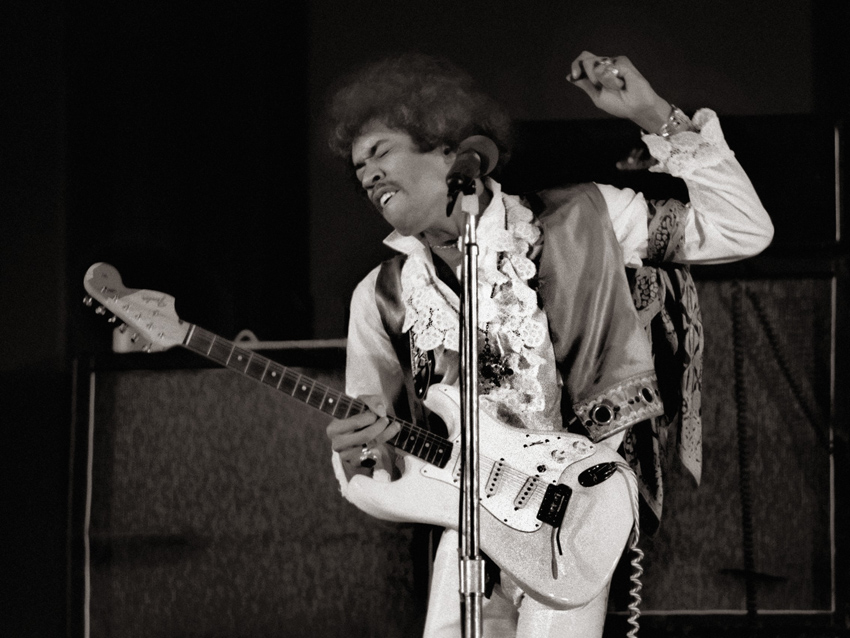
1967
Country picker Chet Atkins employed a wah-wah-style sound on his exotic 1961 hit Boo Boo Stick Beat, but the first Vox wah-wah pedal - which tweaked the peak frequency of its input signal –-isn’t released for another six years. Hendrix latches on to the new toy and blows a few six-string minds when he comes up with the groundbreaking intro to Voodoo Chile.

1970
Walter/Wendy Carlos - depending on the length of the sideburns - and Bob Moog further develop the vocoder, which pops up on Carlos’s soundtrack to Stanley Kubrick’s controversial movie A Clockwork Orange. It’s followed in 1974 by electronica’s most famous vocoder tune, Kraftwerk’s Autobahn. Get a vocoder right and it’ll sound amazing - get it wrong and all your friends will laugh at you.
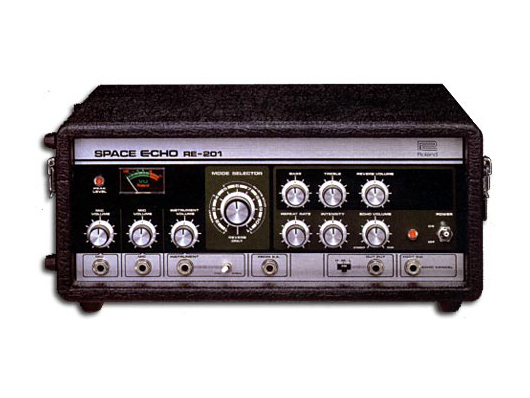
1973
Roland releases the RE-201, otherwise known as the Space Echo. Like Sam Phillips’ slapback, it relies on a loop of tape, which constantly records, plays back and erases the input signal, but it’s completely portable! Nowadays the Space Echo is a highly prized and unpredictably gorgeous piece of kit… just ask fans like Underworld, Radiohead and Fatboy Slim.

1974
The first demos of the Eventide Harmonizer H910, which offers pitch shift, delay and a whole lot more. Frank Zappa and producer Tony Visconti - check the snare sound on Bowie’s Young Americans - are early customers. Over 20 years later, Goldie will use it to help him sculpt Timeless - and almost 20 years after that, the Harmonizer is still on sale and still much sought after. A genuine classic.
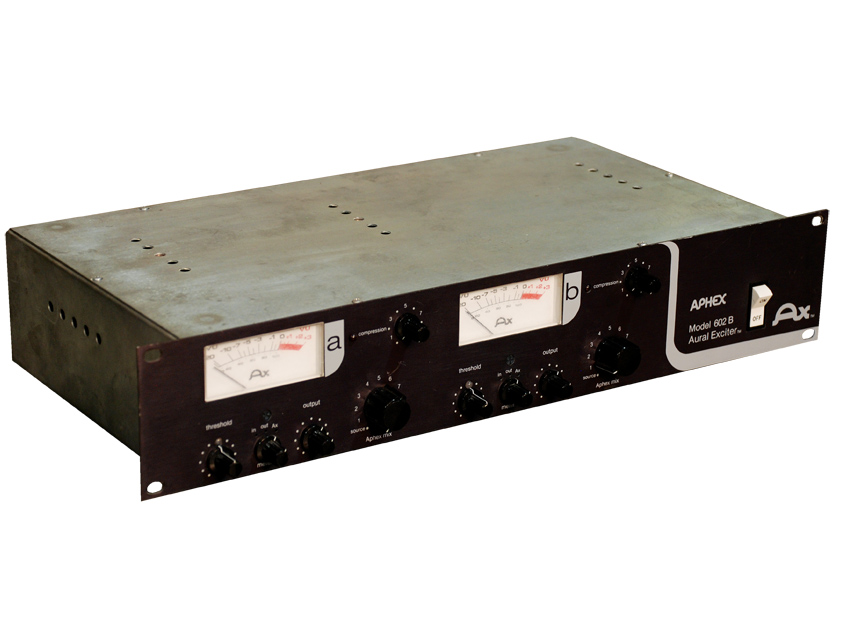
1975
The Aphex Electronics company’s new Aural Exciter - stop giggling - adds synthesized harmonic sparkle to productions and proves ludicrously popular. The original design is licensed by everyone from Yamaha to E-MU and will eventually provide a certain Mr Twin with one half of his stage name - used only with the kind permission of the company, of course.
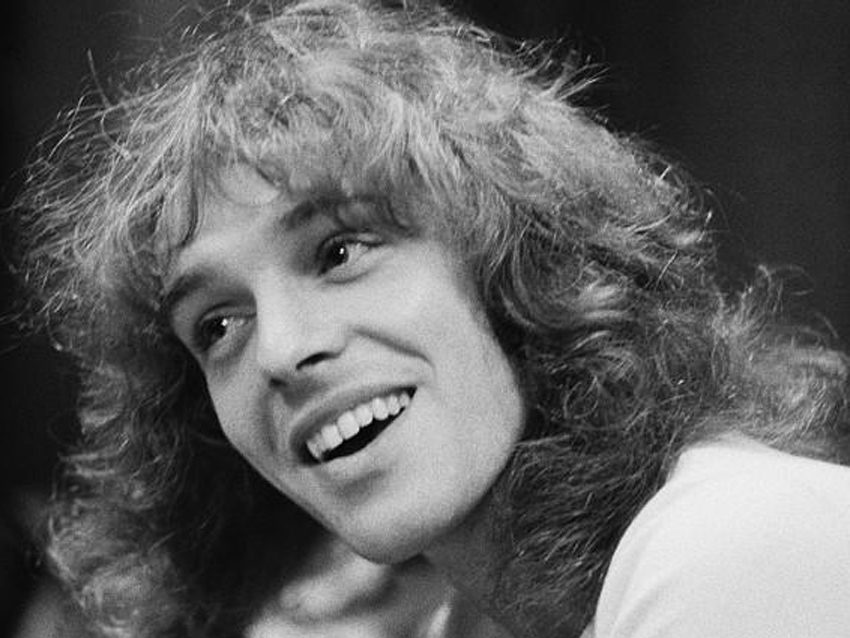
1976
Peter Frampton sells a zillion copies of his Frampton Comes Alive album, thanks in part to the use of his mysterious talk box. Imagine a vocoder made by John Noakes on Blue Peter: a speaker sends sound up a plastic tube and you put the tube in your mouth, allowing you to alter the harmonic content of the sound, which is subsequently picked up by the mic.

1978
Advanced Music Systems (AMS) comes up with the world’s first ‘computer-controlled digital delay’, the DMX 15-80. Later models included delays of up to 32 seconds (dub-tastic - no wonder Adrian Sherwood’s a fan) and loop triggering, which, of course, led to sampling. Designed and built in that rock and roll capital of the world… Burnley.
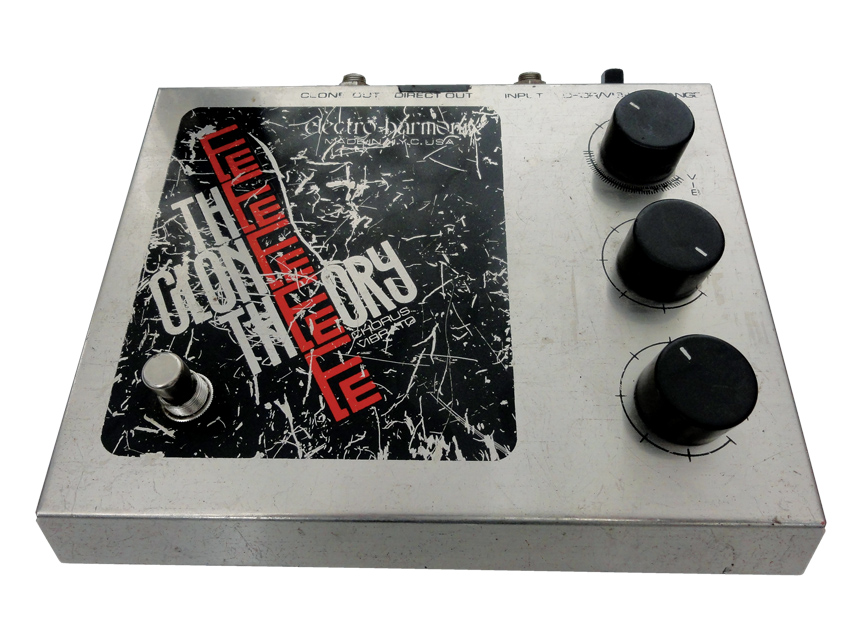
1979
Joy Division’s low-slung, beardy bassist, Peter Hook, is partial to a bit of Electro-Harmonix Clone Theory, sounding wonderfully doleful and disconcerting on tracks like Love Will Tear Us Apart. Sadly, by the ‘80s, it’s everywhere. From goth and hair metal to new romantic and pure pop, a bass just isn’t a bass unless it’s been chorused to high heaven.
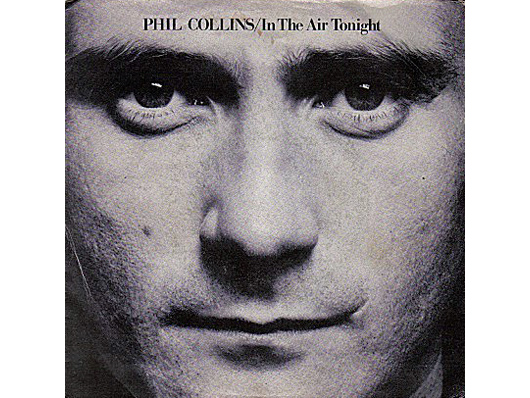
1981
Talking of the ‘80s, if you’re looking for one sound that defines the whole decade, you could do a lot worse than the drums on Phil Collins’ In The Air Tonight. The effect in question - invented by Hugh Padgham - is called gated reverb and, as you’d expect, is created with a combination of big reverb and harsh gating, plus plenty of compression and, er, chocolate-loving apes.
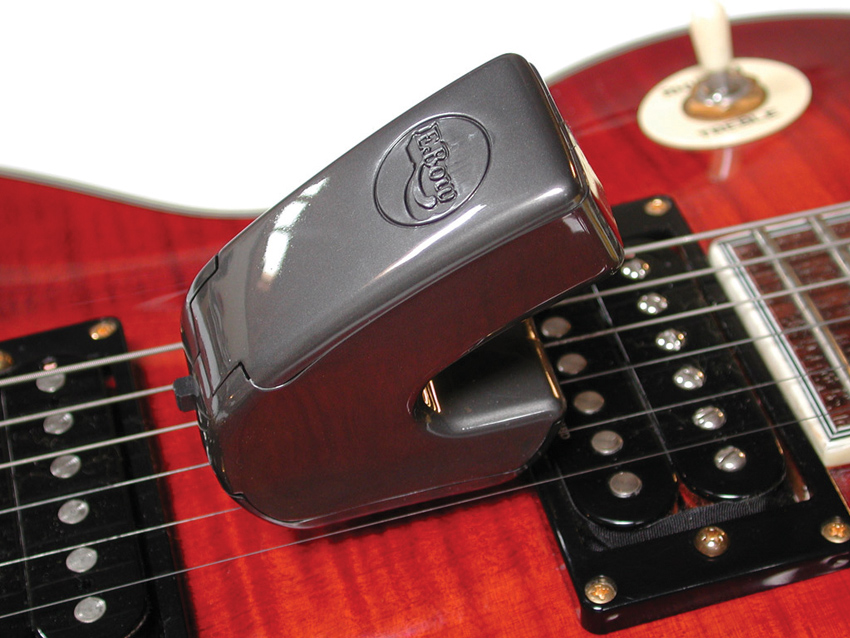
1983
The Ebow - an electronic alternative to playing your guitar with a violin bow - had actually been invented in the late ‘60s, but it’s Big Country’s Stuart Adamson who does most to boost sales of this nifty little device. Is the Ebow really responsible for those bagpipe wails on the band’s debut album, or is that just urban myth? Who cares? It makes your guitar sound weird and we love it!

1988
Ah, the arrival of the Akai S950, with an amazing new feature called timestretch that enables you to speed up or slow down samples and loops. Stretch a two-second loop over four seconds and… hello rhythmic mayhem! It can be used to maaassssssiiiivvvvve effect on vocal samples, too. It reaches a cultural peak almost 10 years later with Double-99’s 1997 garage anthem RIP Groove.
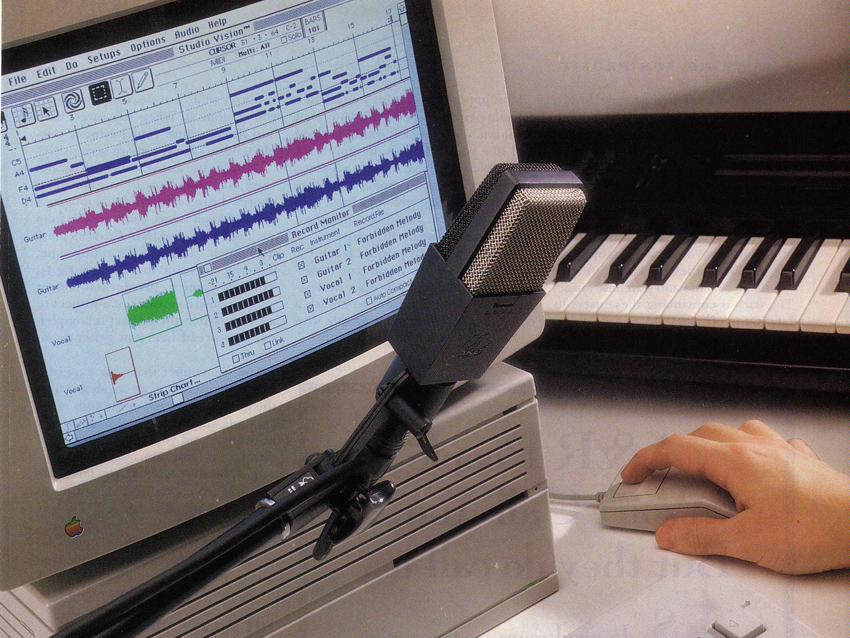
1989
Before Pro Tools there was Sound Tools, an early DAW available for bedroom muso computers like the Atari and Mac. Its rudimentary ‘effects’ only replicate what’s available on the average mixing desk, but nobody cares about that - it’s a DAW! It enables you to turn your humble bedroom computer into a digital recording studio! And it only costs, er, $4,000!

1989
Arguably the guitarist’s ultimate distortion pedal, the Tech 21 SansAmp introduces the idea of amp modelling. Why spend thousands on a vintage Marshall head when you can (sort of) recreate the sound with a few knobs and switches? Later amp modellers include Line 6’s Pod range and, of course, software like IK Multimedia’s AmpliTube and Native Instruments’ Guitar Rig.
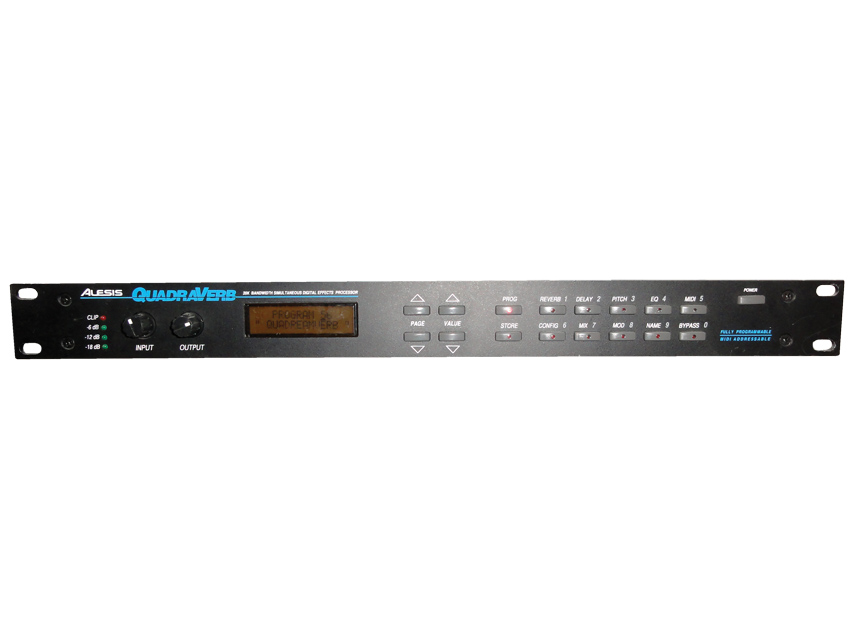
1990
The affordability of Portastudios drives the demand for decent, affordable outboard effects. The one that every home studio producer wants is the Alesis Quadraverb. Why? Cos it’s ultra-controllable, sounds ace and is reasonably priced. Five grand’s worth of reverb for a few hundred quid… no wonder it goes on to become one of the best-selling effects units of all time.
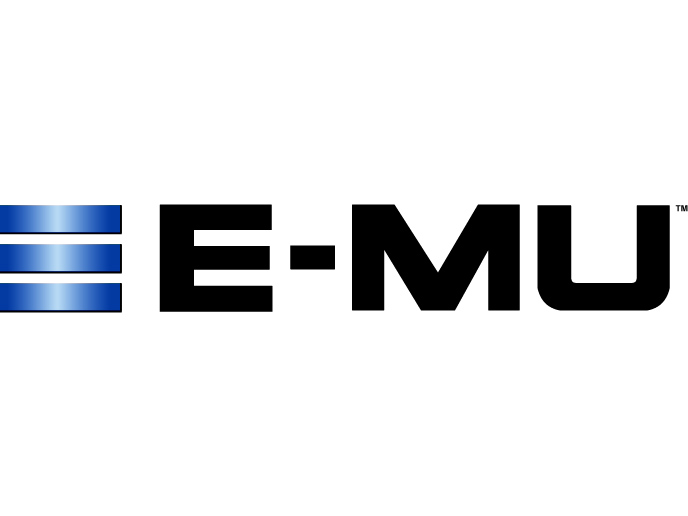
1993
E-MU’s remarkable Z-plane filters first appear on the company’s rackmount Morpheus synth, favoured by the likes of Orbital and LTJ Bukem. But when E-MU adds these highly tweakable filters to its popular range of samplers - like the Emulator IV - it introduces a whole new dimension to loop/beat processing. Without Z-plane synthesis, it’s unlikely we’d have had drum ’n’ bass offshoots like neurofunk.
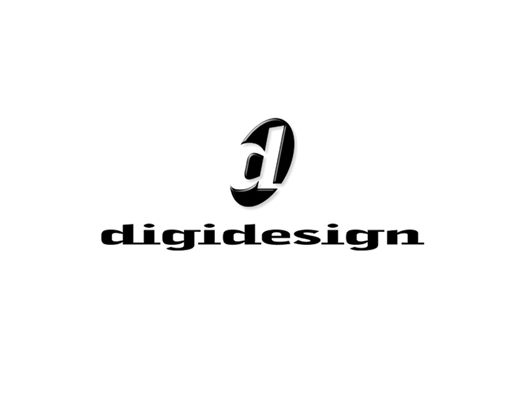
1996
In the early days, Pro Tools’ only concern was recording and mixing - effects processing was very much an outboard experience. But with the release of Pro Tools III, Digidesign finally decide to include the all-important TDM bus - the bit that controls Pro Tools’ use of DSP-based effects - as standard. Hand over your pennies - about six hundred thousand of ’em - and what you now get is an entire studio in a box.

1996
It’s July and there’s musical revolution in the air as Steinberg launches its groundbreaking Cubase VST 3. You get MIDI, you get audio… but, you also get built-in effects and processing. And you can use four effects at once. Four! Wow! The age of the plug-in has arrived and the bedroom studio will never be the same.

1997
The recording world may have gone digital, but some producers are still very fond of analogue squelch. The MIDI-controlled Sherman Filterbank (alongside the Mutronics Mutator and Waldorf Miniworks) adds retro oomph to any sound you stick through it - a key piece of kit for Daft Punk and anyone involved in the heavily filtered French house scene.
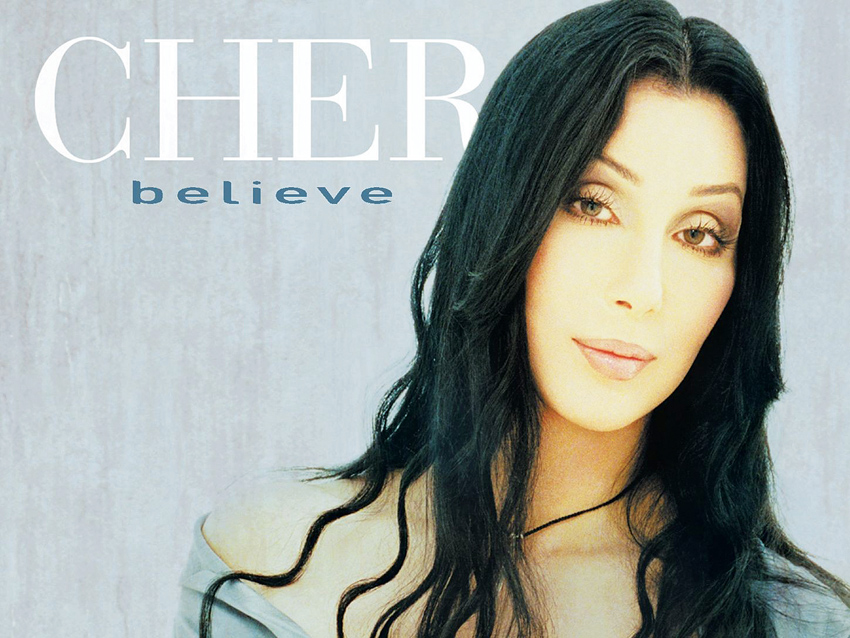
1998
Cher isn’t exactly a new kid on the pop block, but that doesn’t stop her investigating cutting-edge plug-in technology like Auto-Tune. Designed to make crap singers sound half-decent, it also provides the startling, step-vocal effects that take Believe to number one. Does anyone remember that Victoria Beckham used it on her debut solo single, too? No, we didn’t think so.
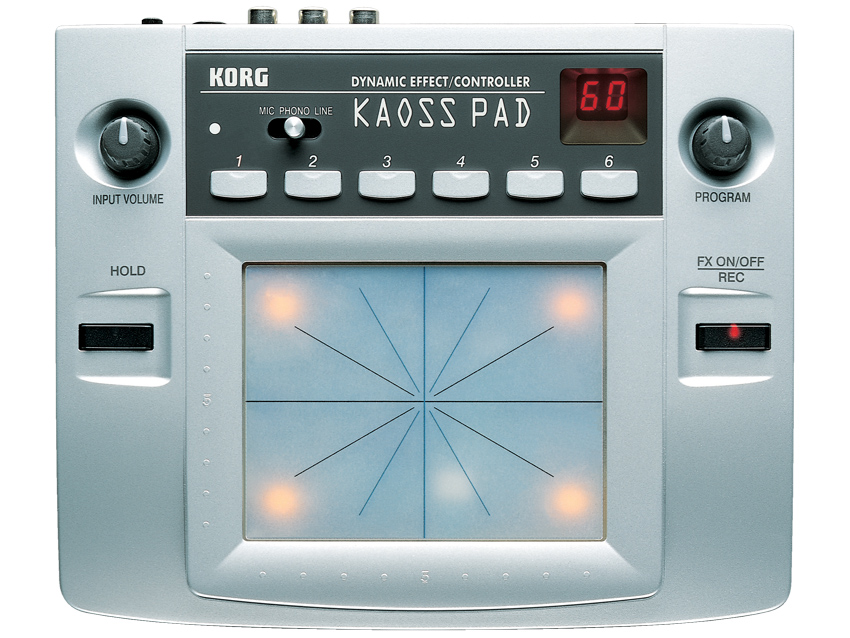
1999
Digital effects get set to manual – literally. Korg’s KP1 Kaoss Pad sticks 60 preset effects and a five-second looping sampler inside a tiny box, all controlled by a finger-friendly, glow-in-the-dark, real-time X/Y ribbon pad. Draw a crazy pattern, make a crazy noise - guaranteed to keep drummers amused while you digitally replace all their out-of-time fills!
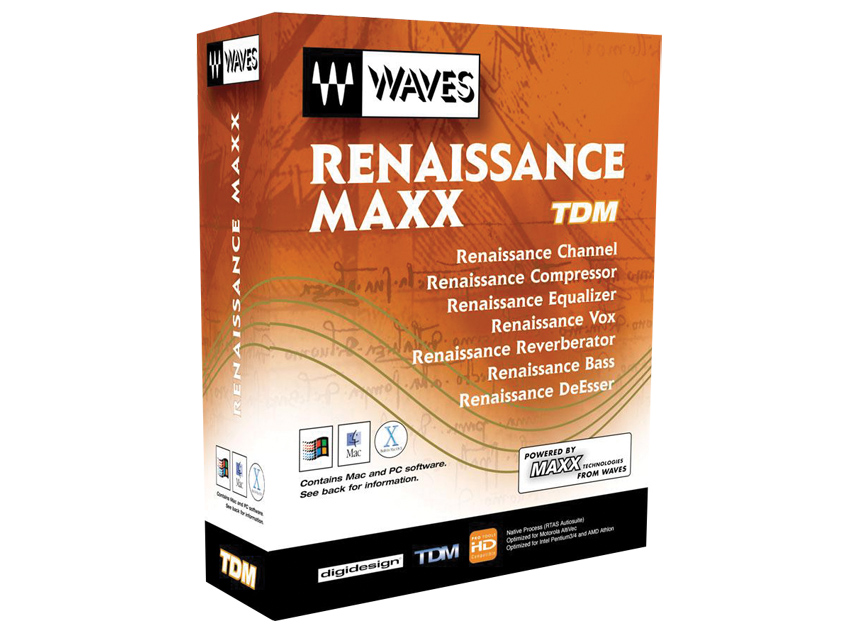
2000
With the huge popularity of DAWs comes a massive surge in third-party plug-in development. At the head of the class is Waves, whose Renaissance bundle sets something of an industry standard. Have a look in any pro studio and you’re guaranteed to find a Waves plug-in - or, more likely, several - lurking somewhere on the computer.
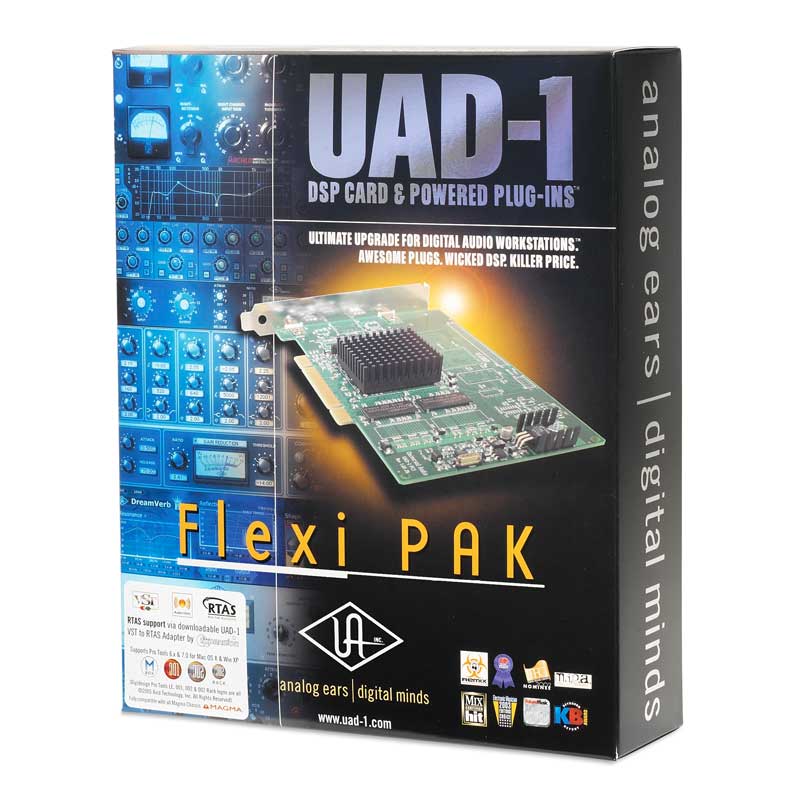
2001
Still not got enough plug-ins? What you need is Universal Audio’s UAD-1. This hefty DSP card adds impressive-sounding effects to any VST-compatible system without eating into your computer’s precious processing power. Leading hardware companies seem to like what they hear, later allowing Universal Audio to develop plug-in versions of classic gear from the likes of Neve and SSL.
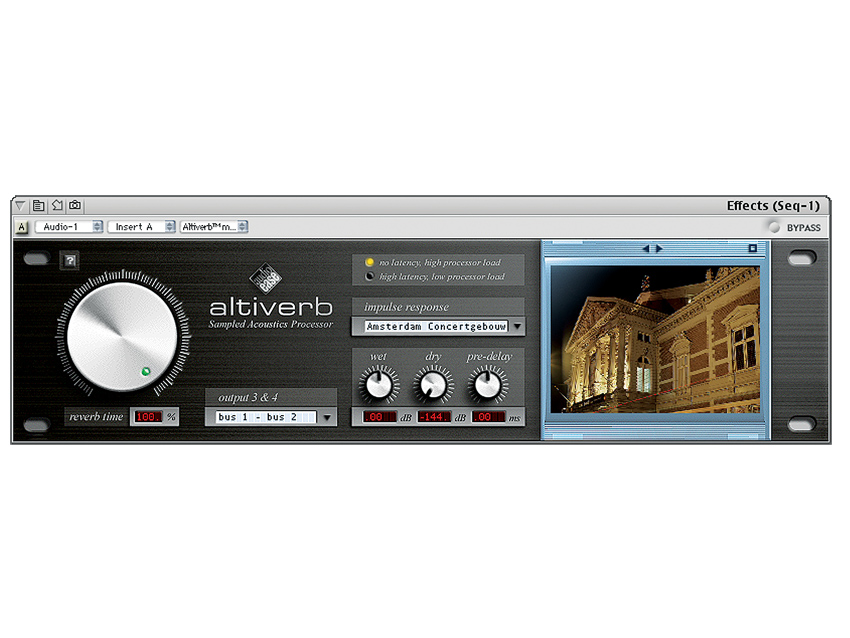
2001
Reverb is no longer enough. These days, what everyone wants is ‘real’ or convolution reverb - the digital simulation of reverb from any physical space. The first punch – and it remains the only convolution plug-in for the next three years - is thrown by Audio Ease’s Altiverb, with a list of ‘real’ spaces that includes Sydney Opera House and the rear of a Ford Transit van.
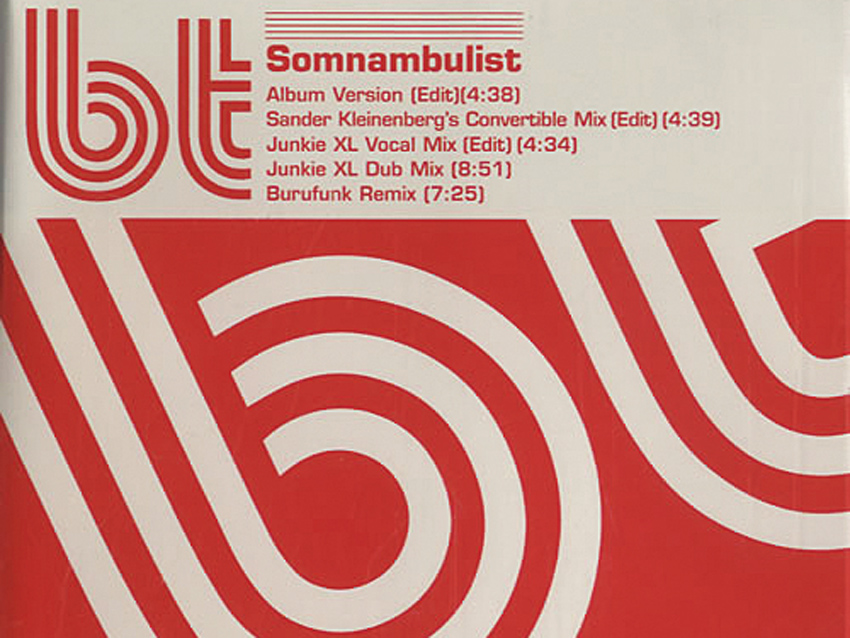
2005
Plug-ins are everywhere, giving musicians complete control over their sound. But after control comes chaos. The likes of Kieran Foster’s Glitch and the recent BT-inspired Stutter break sound down into randomly generated slices of… noise. For some early glitch/stutter action, listen to BT’s 2003 tune Somnambulist, which features a Guinness record-breaking 6,178 vocal edits.

2011
How ironic that we round up our whirlwind tour of FX milestones with the release of UAD’s Studer A800 Emulator. A year in development, it’s apparently one of the most complex plug-ins ever released, and its only job is to recreate the sound of an old-fashioned analogue reel-to-reel tape machine. The more things change…
